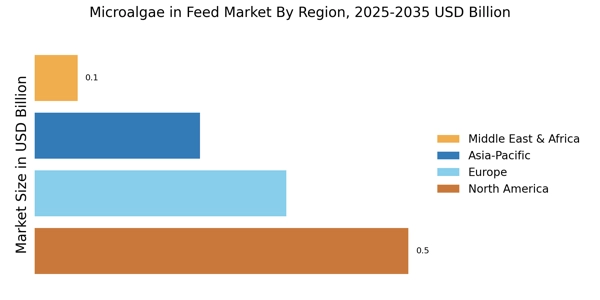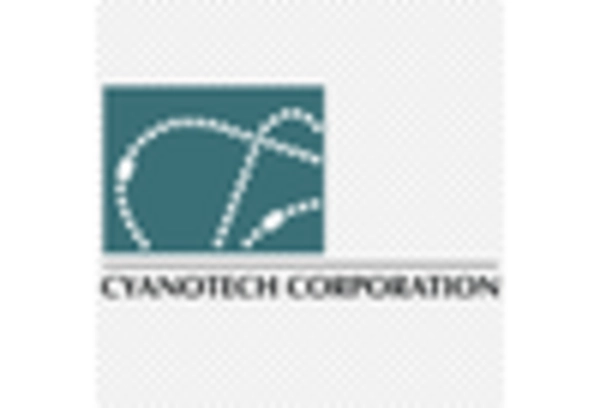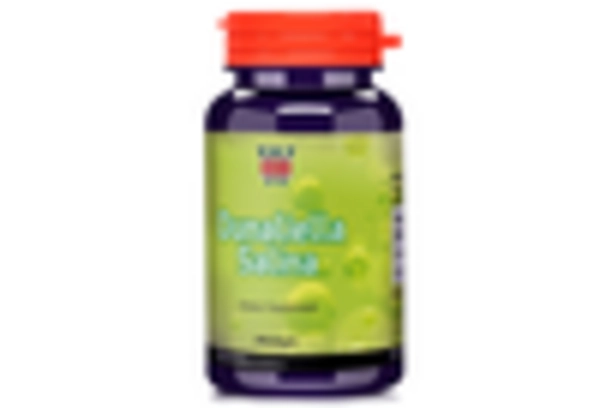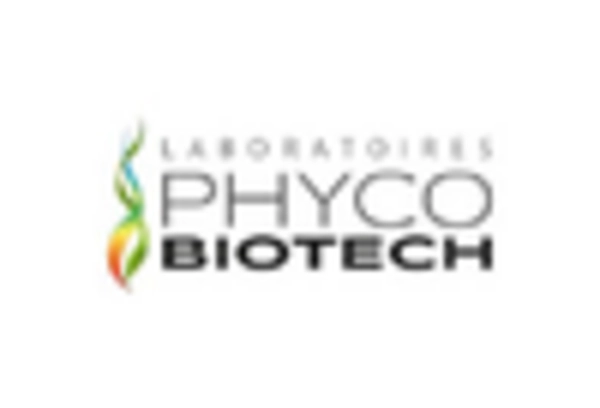Nutritional Benefits
The nutritional profile of microalgae is emerging as a significant driver for the Microalgae in Feed Market. Rich in essential fatty acids, proteins, vitamins, and minerals, microalgae offer a comprehensive nutritional package that can enhance the health and growth of livestock. Studies suggest that incorporating microalgae into animal feed can improve feed conversion ratios and overall animal performance. For instance, the inclusion of specific microalgae strains has been shown to boost omega-3 fatty acid levels in fish, which is increasingly sought after by health-conscious consumers. As the demand for high-quality, nutrient-dense animal products continues to escalate, the Microalgae in Feed Market is likely to benefit from the growing recognition of microalgae as a superior feed ingredient.
Sustainability Initiatives
The increasing emphasis on sustainability within the agricultural sector appears to be a pivotal driver for the Microalgae in Feed Market. As consumers and producers alike become more environmentally conscious, the demand for sustainable feed alternatives is likely to rise. Microalgae, known for their low resource requirements and high productivity, present a viable solution to traditional feed sources. Reports indicate that microalgae can produce up to 50 times more protein per acre than conventional crops, making them an attractive option for feed manufacturers. This shift towards sustainable practices not only addresses environmental concerns but also aligns with the growing trend of eco-friendly products in the market. Consequently, the Microalgae in Feed Market is poised for growth as stakeholders seek to meet both consumer demand and regulatory standards for sustainability.
Technological Advancements
Technological advancements in the cultivation and processing of microalgae are likely to propel the Microalgae in Feed Market forward. Innovations in bioreactor design, harvesting techniques, and extraction methods have enhanced the efficiency and cost-effectiveness of microalgae production. For example, recent developments in photobioreactor technology have increased biomass yields while reducing energy consumption. This progress not only lowers production costs but also makes microalgae a more competitive feed option compared to traditional sources. As technology continues to evolve, the Microalgae in Feed Market may witness an influx of new players and products, further diversifying the market and expanding its reach across various animal feed applications.
Regulatory Support and Standards
Regulatory support for the use of microalgae in animal feed is becoming increasingly apparent, serving as a crucial driver for the Microalgae in Feed Market. Governments and regulatory bodies are beginning to recognize the potential of microalgae as a safe and nutritious feed ingredient. This recognition is leading to the establishment of guidelines and standards that facilitate the approval process for microalgae-based products. For instance, the European Food Safety Authority has provided positive assessments for certain microalgae species, paving the way for their inclusion in feed formulations. As regulatory frameworks become more favorable, the Microalgae in Feed Market is expected to experience accelerated growth, as manufacturers gain confidence in the marketability of their products.
Consumer Demand for Alternative Proteins
The rising consumer demand for alternative protein sources is significantly influencing the Microalgae in Feed Market. As dietary preferences shift towards plant-based and sustainable options, the need for alternative protein sources in animal feed is becoming more pronounced. Microalgae, with their high protein content and amino acid profile, are well-positioned to meet this demand. Market data indicates that the alternative protein market is projected to grow substantially, with microalgae playing a key role in this transformation. This trend is not only driven by health considerations but also by ethical concerns regarding animal welfare and environmental sustainability. Consequently, the Microalgae in Feed Market is likely to expand as it aligns with the evolving preferences of consumers and the broader food industry.


















Leave a Comment